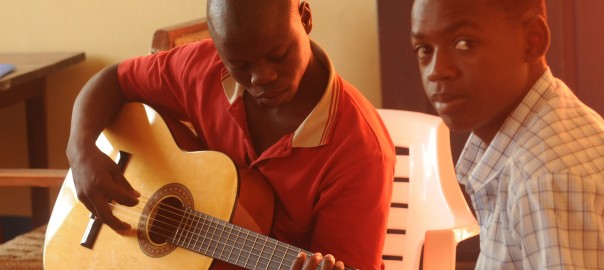How to Clean Your Trumpet
Over time the inside of your trumpet will get pretty nasty. Your constantly blowing warm, moist air through your horn, then storing it in dark place. That’s not even accounting for all the bits of food that can get stuck in there when you eat and play.
How often should you clean your trumpet? That all depends how often you play. For the average student once or twice a year should be enough. A professional player such as myself will clean my trumpet far more often. Additional cleaning may be necessary if you have a tendency to eat and drink (especially sugary foods) when you play.
Total Time: 45 minutes
Active Time: 15 minutes
Before you start, make sure to pick up a Trumpet Cleaning Kit. You can find it at most music stores, online, etc.
Your kit should include:
- A Trumpet Snake: along wire with brushes on either end.
- Valve Casing Brush: A Brush about 1/2″-3/4″ in diameter and a few inches long. Should be about the same diameter as your valves.
- Mouthpiece Brush: A small, thin brush (thin enough to fit in the shank of your mouthpiece).
- Polishing Cloth
You’ll also need:
- Valve Oil
- Slide Grease
*Oil and grease may be included in your cleaning kit.
Cleaning Procedure:
- Gather all of your supplies including:
- All Brushes
- 2 Bowls
- 2 Towels
- Dish soap (for handwashing dishes, not dishwasher soap)
- Fill a sink or bathtub with lukewarm water
- The sink should be large enough to fit your trumpet
- Place a towel in the sink (so you don’t dent or scratch your horn)
- Make sure the water is not too hot (if you put your hand in the sink and say “ooh…that’s hot” it’s too hot). Hot water can strip the lacquer off your horn.
- Fill a bowl with lukewarm water & line it with a small towel (or paper towel)
- This is where you’ll soak any smaller parts.
- Disassemble your trumpet:
- Remove your valves. Remove the top valve caps and finger buttons if you can.
- Check that each valve has a number (1, 2, 3). If not, pay careful attention to which valve is which. You do not want to mix them up.
- If you can remove the felts, place them in a dry bowl.
- Place all metal parts in bowl of water.
- Remove bottom valve caps, place in bowl of water.
- First and Second Valve Slides should go in bowl of water.
- Tuning slide and Third Valve slide can go in either the sink or bowl.
- You may have to remove a slide-stop screw to remove the third valve slide. Place it in the dry bowl.
- Place your Mouthpiece in the bowl of water
- Remove your valves. Remove the top valve caps and finger buttons if you can.
- Let your trumpet soak for 30 minutes
- Lay out a dry towel (to dry your trumpet)
- Drain the sink
- Put soap on the trumpet snake brush. Brush out each slide. Be sure to rinse thoroughly & place on towel to dry.
- Snake all pipes of the trumpet.
- Put soap on the valve casing brush. Brush out all three casings. Rinse thoroughly and place on towel to dry.
- Brush the holes in your valves. Put soap on a paper towel and wipe off the outside of each valve. Rinse thoroughly and place on towel to dry.
- Put soap on your mouthpiece brush. Brush out the mouthpiece. Rinse thoroughly and place on towel to dry.
- Let all parts dry.
- Grease each slide and put the trumpet back together.
- If you had to remove any screws, be sure to put them back on.
- Reassemble your valves. Make sure that you put them in the right place (1st valve in the first casing, etc.). Oil your valves.
- Replace the bottom casings and any other parts that remain.
- Polish your trumpet and enjoy!
With just a little care your trumpet should last a lifetime!
